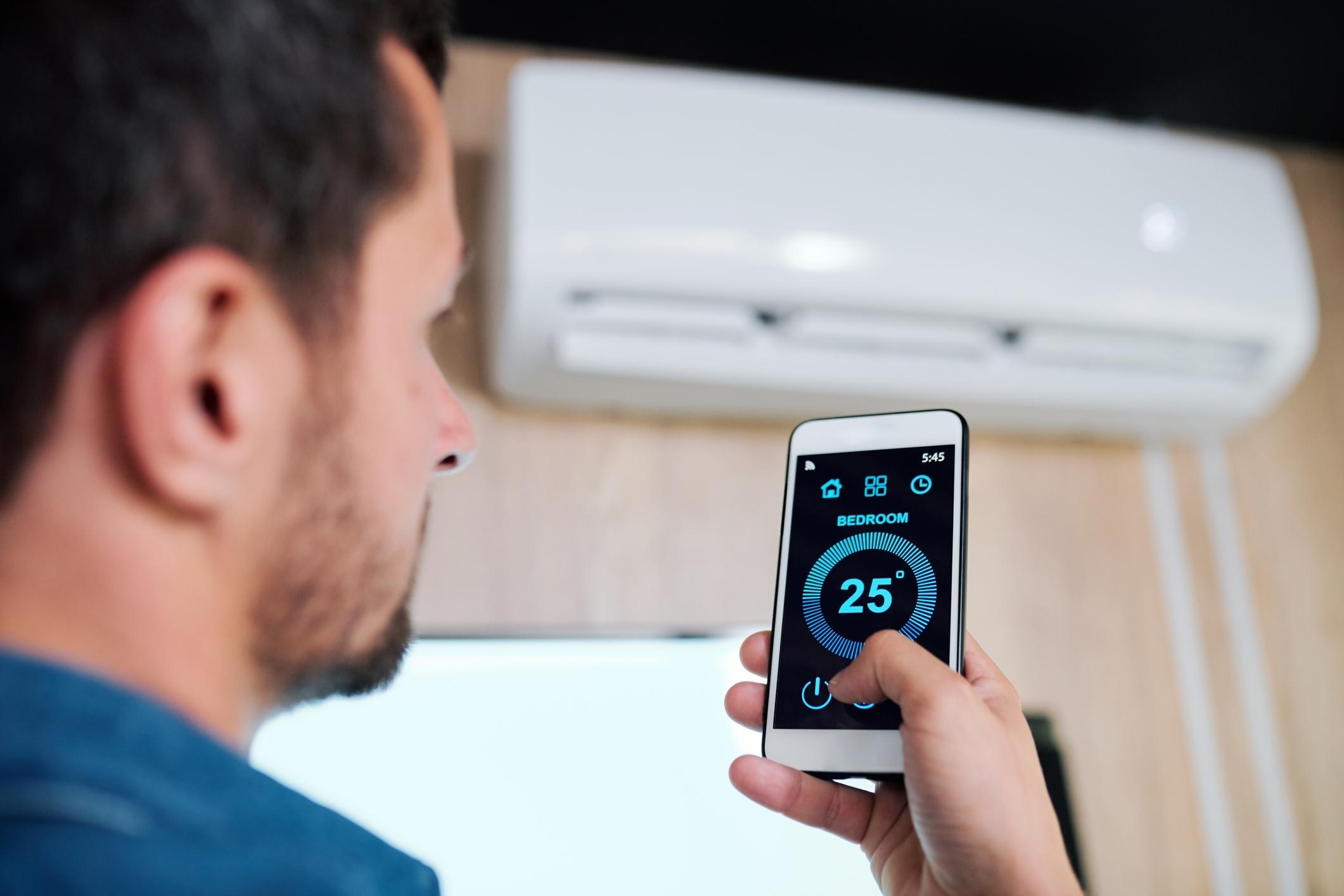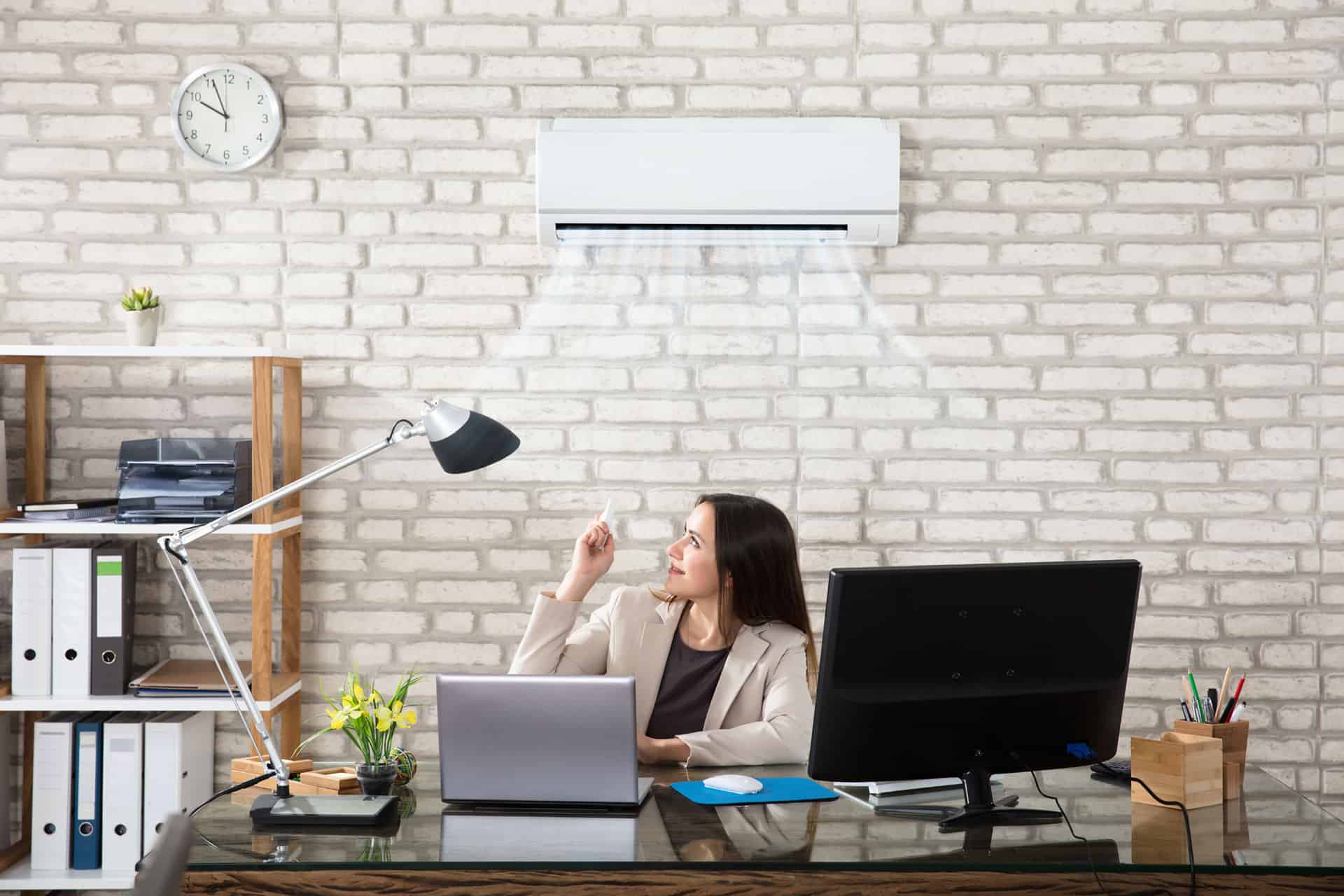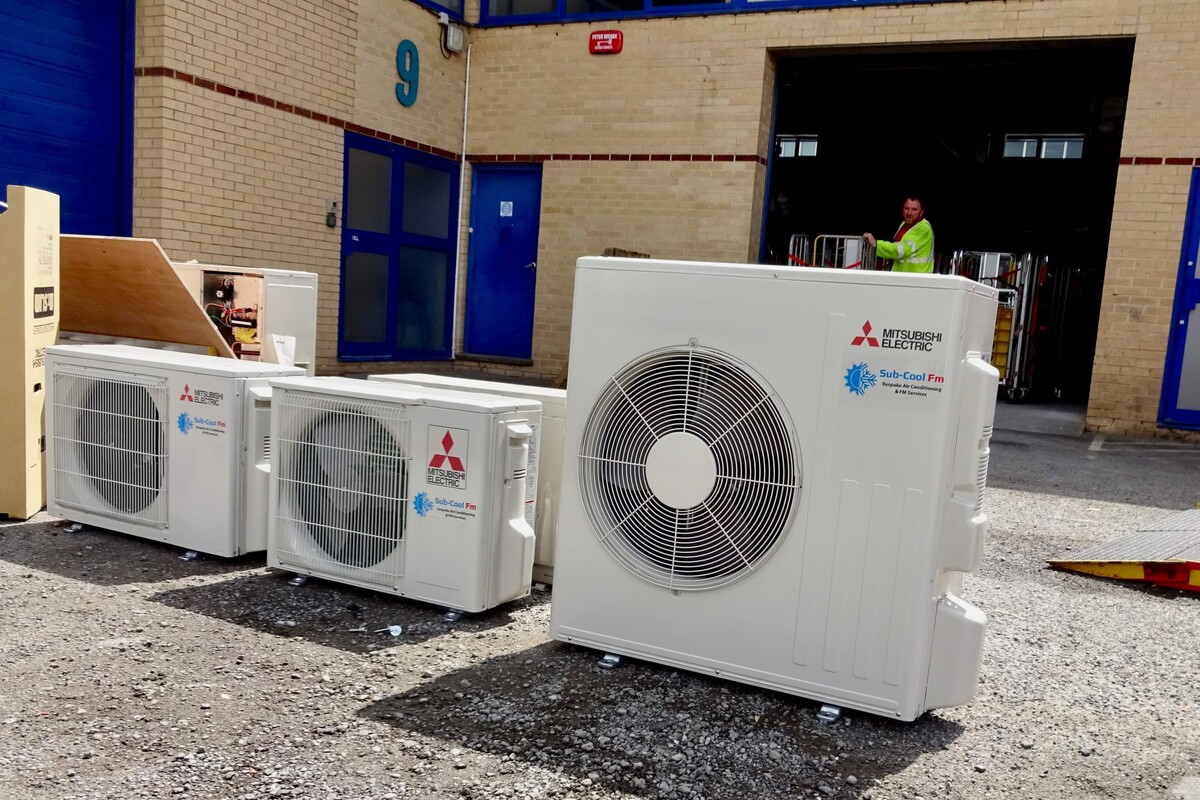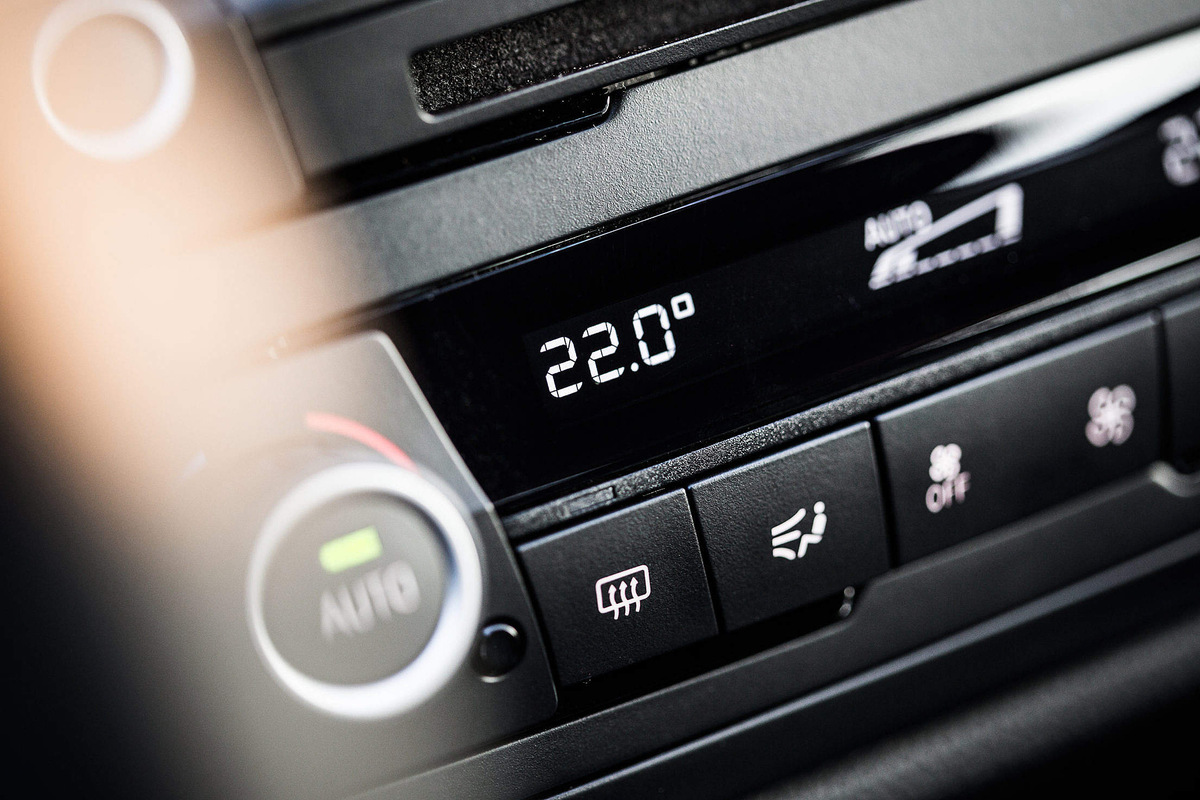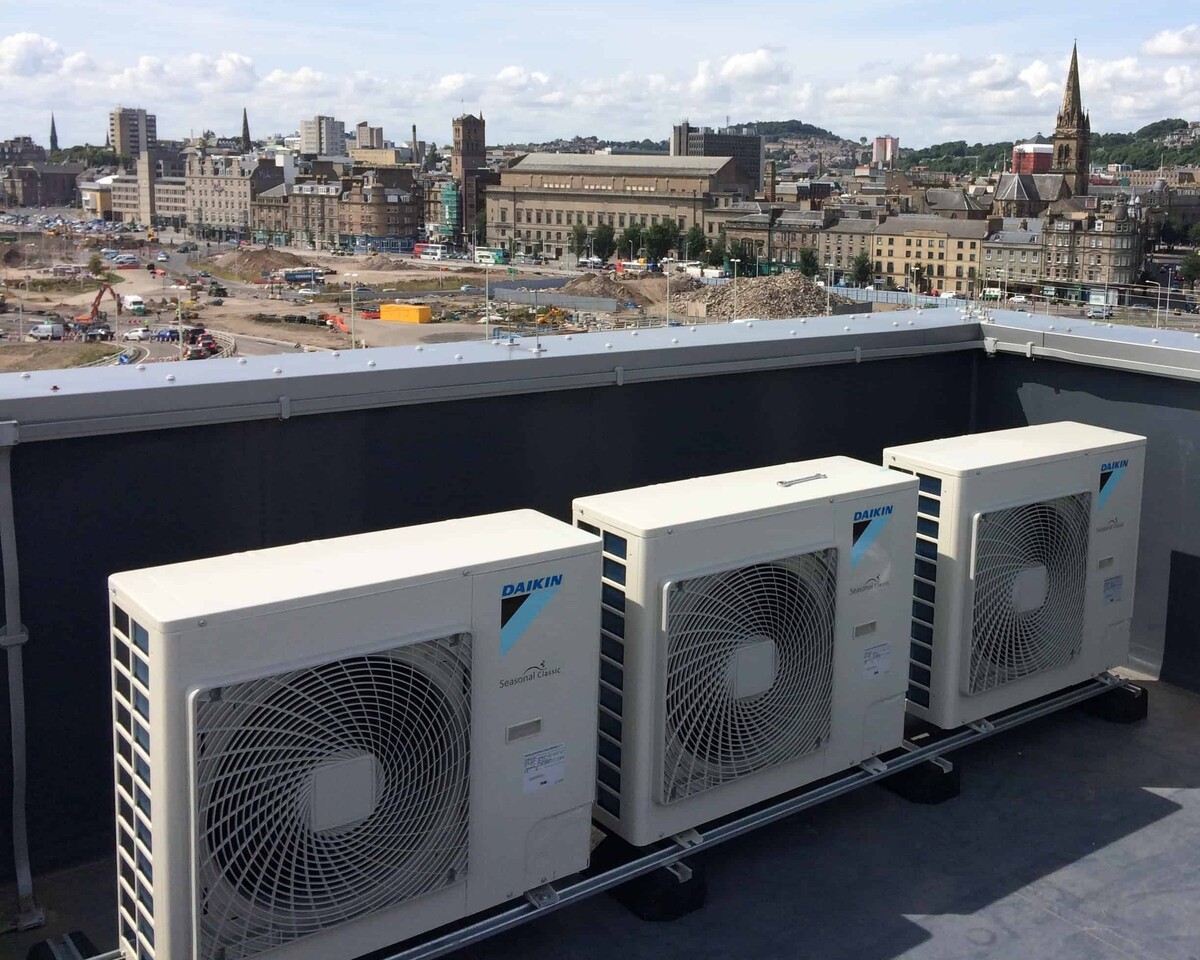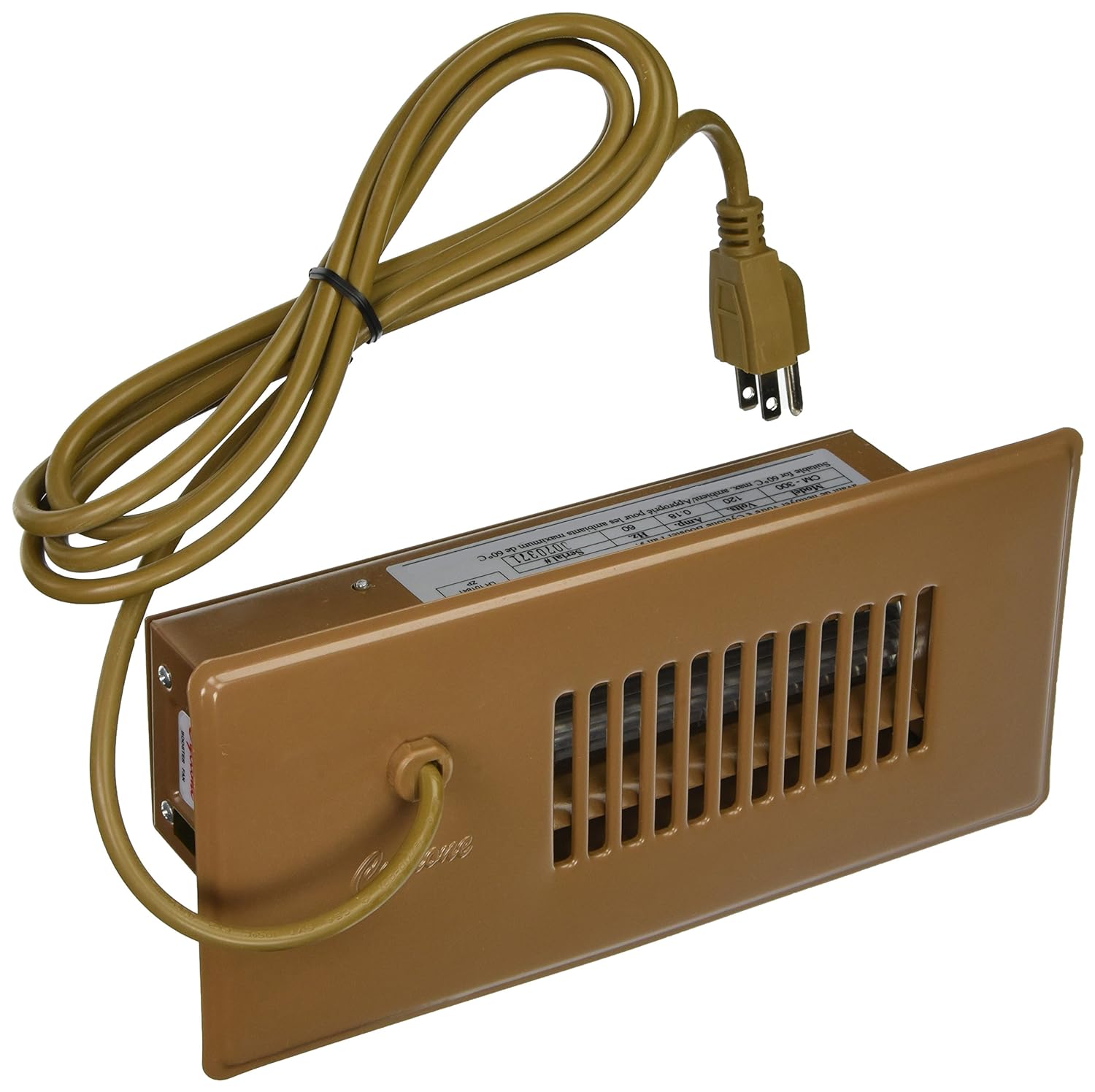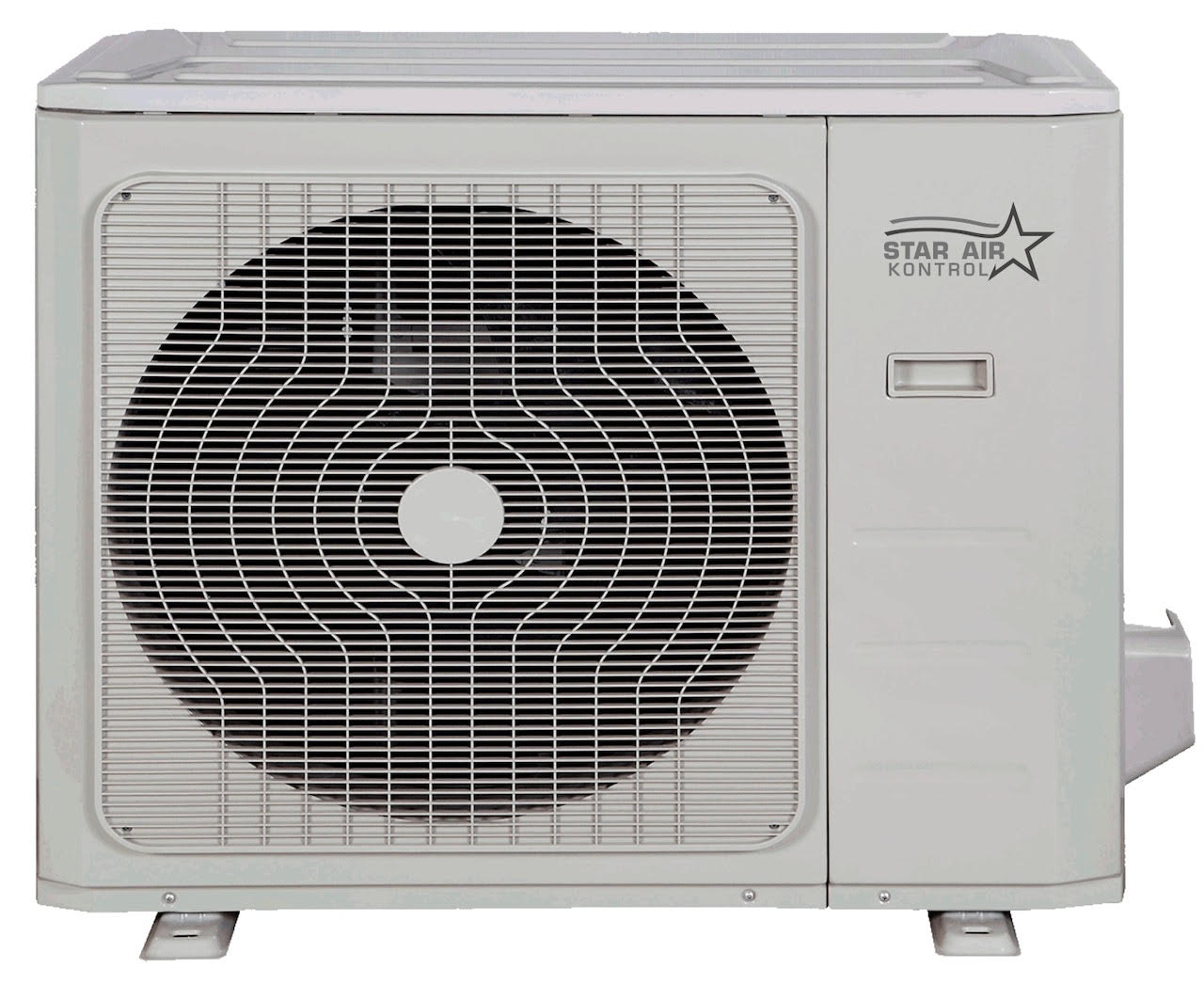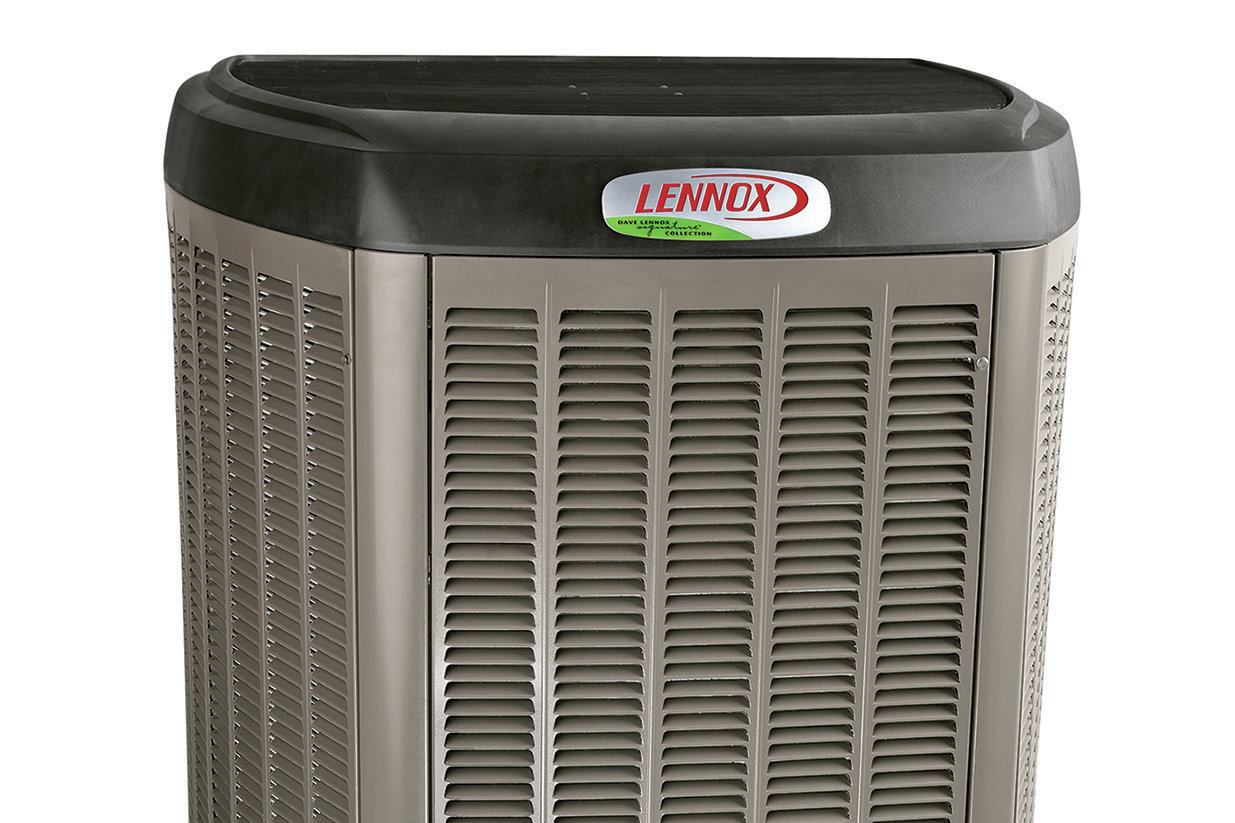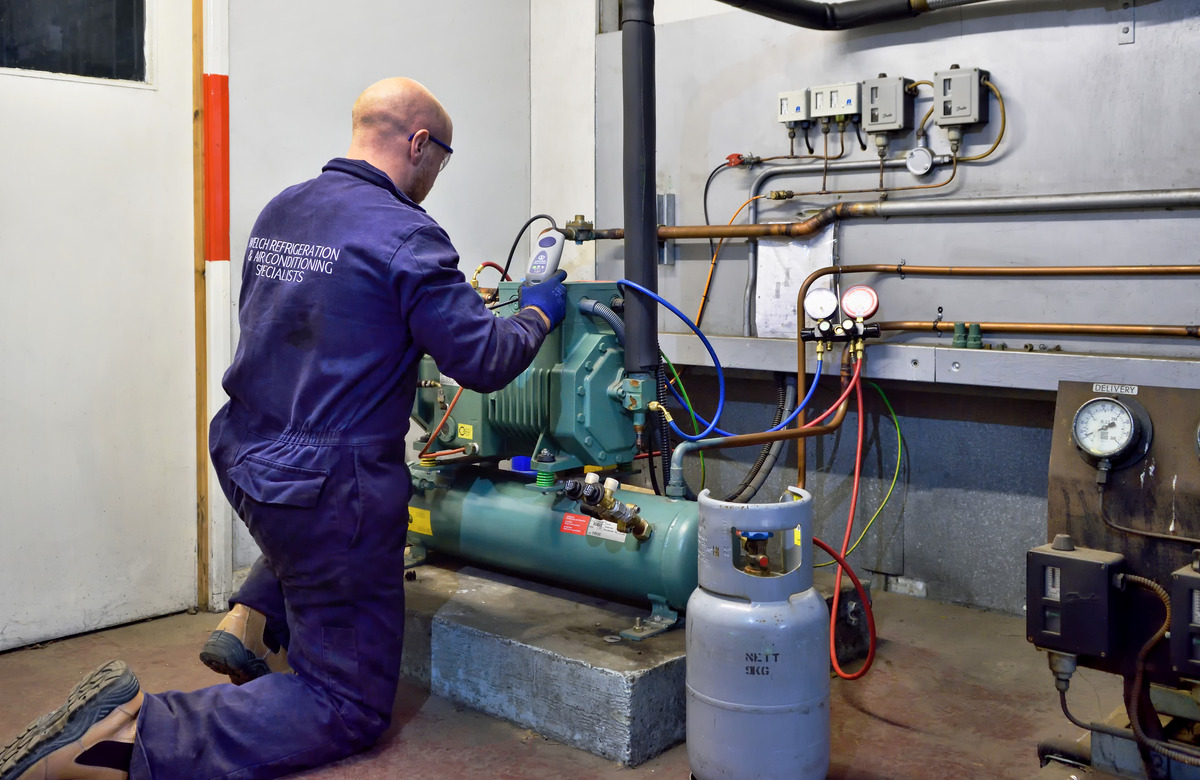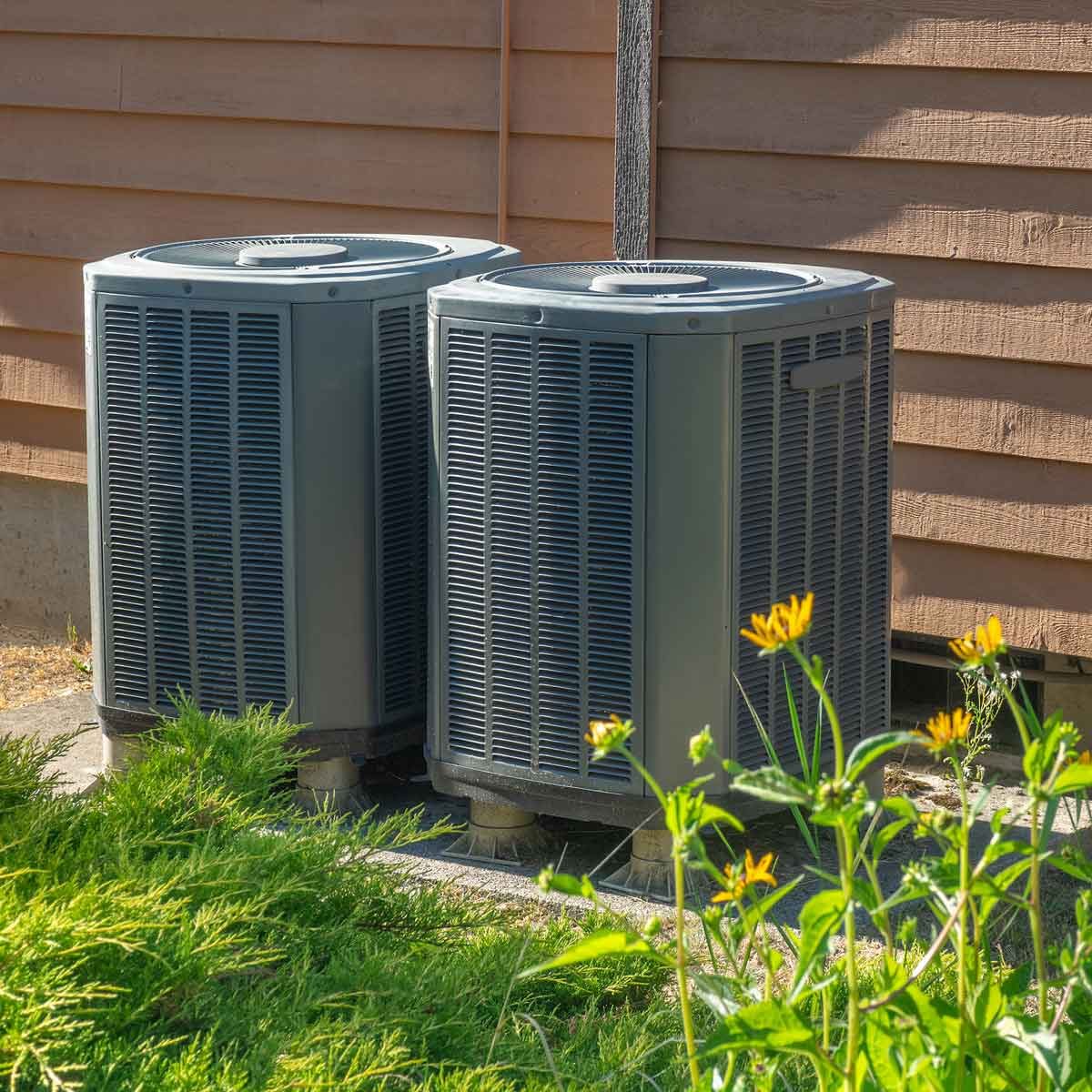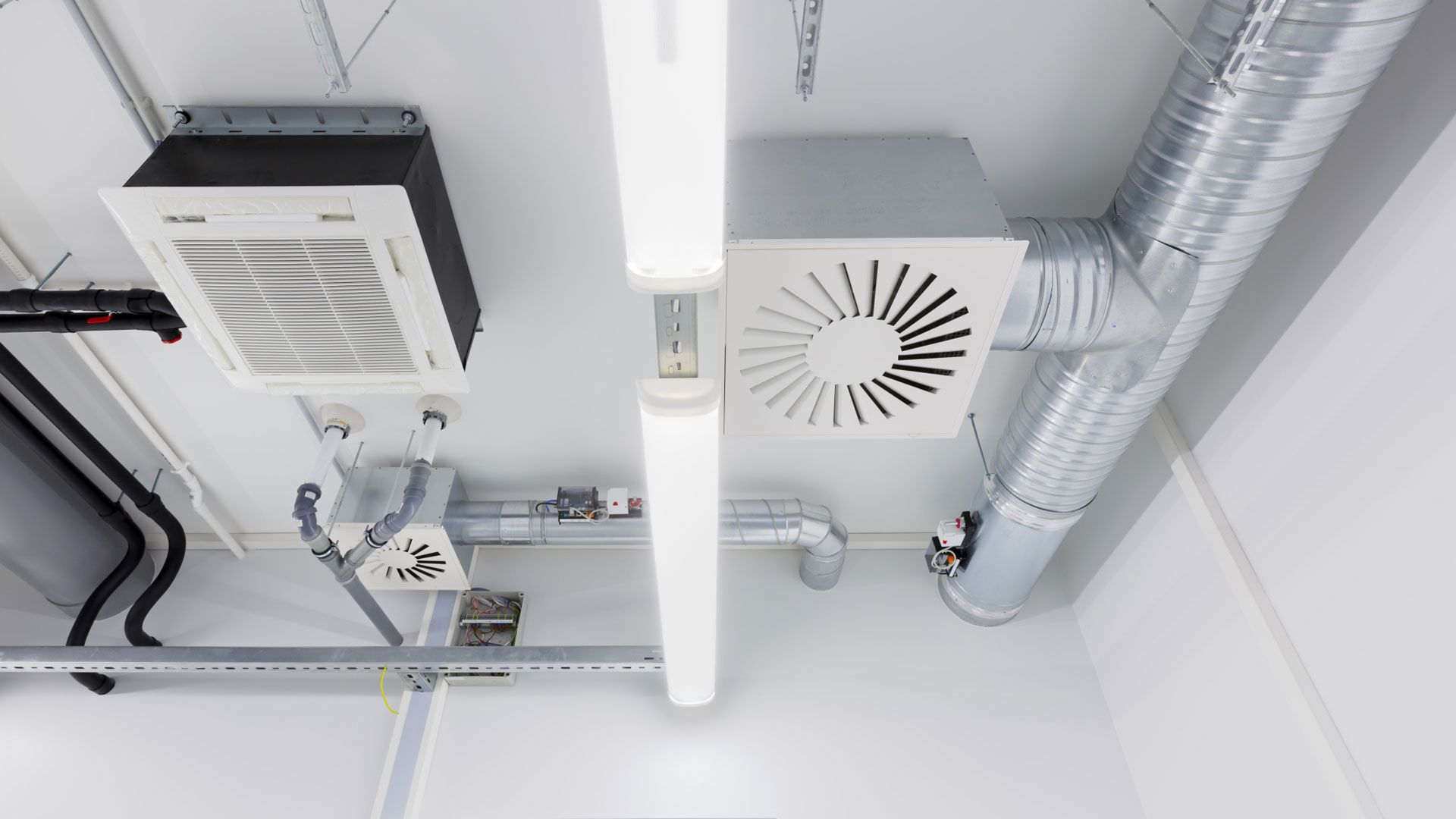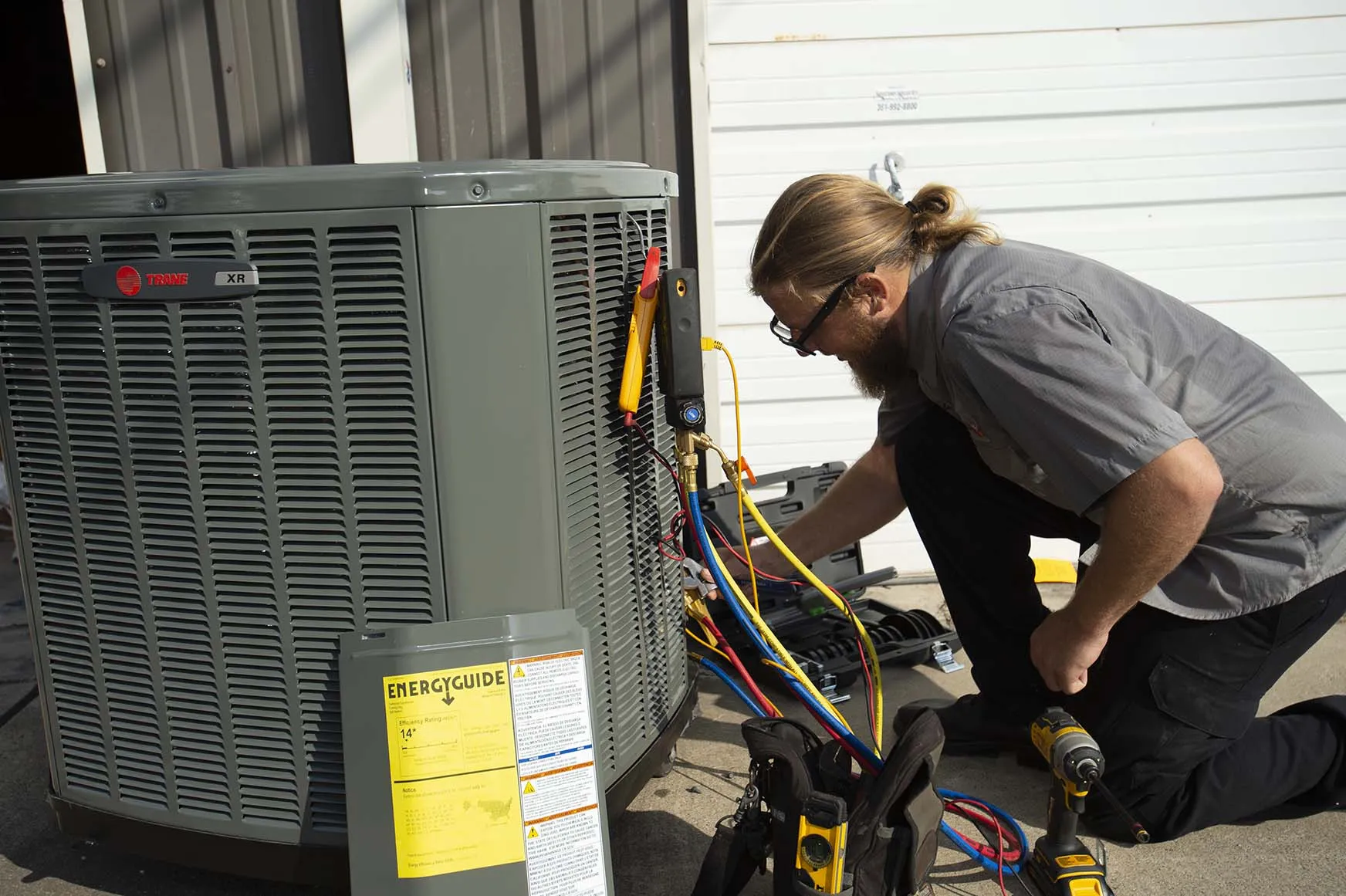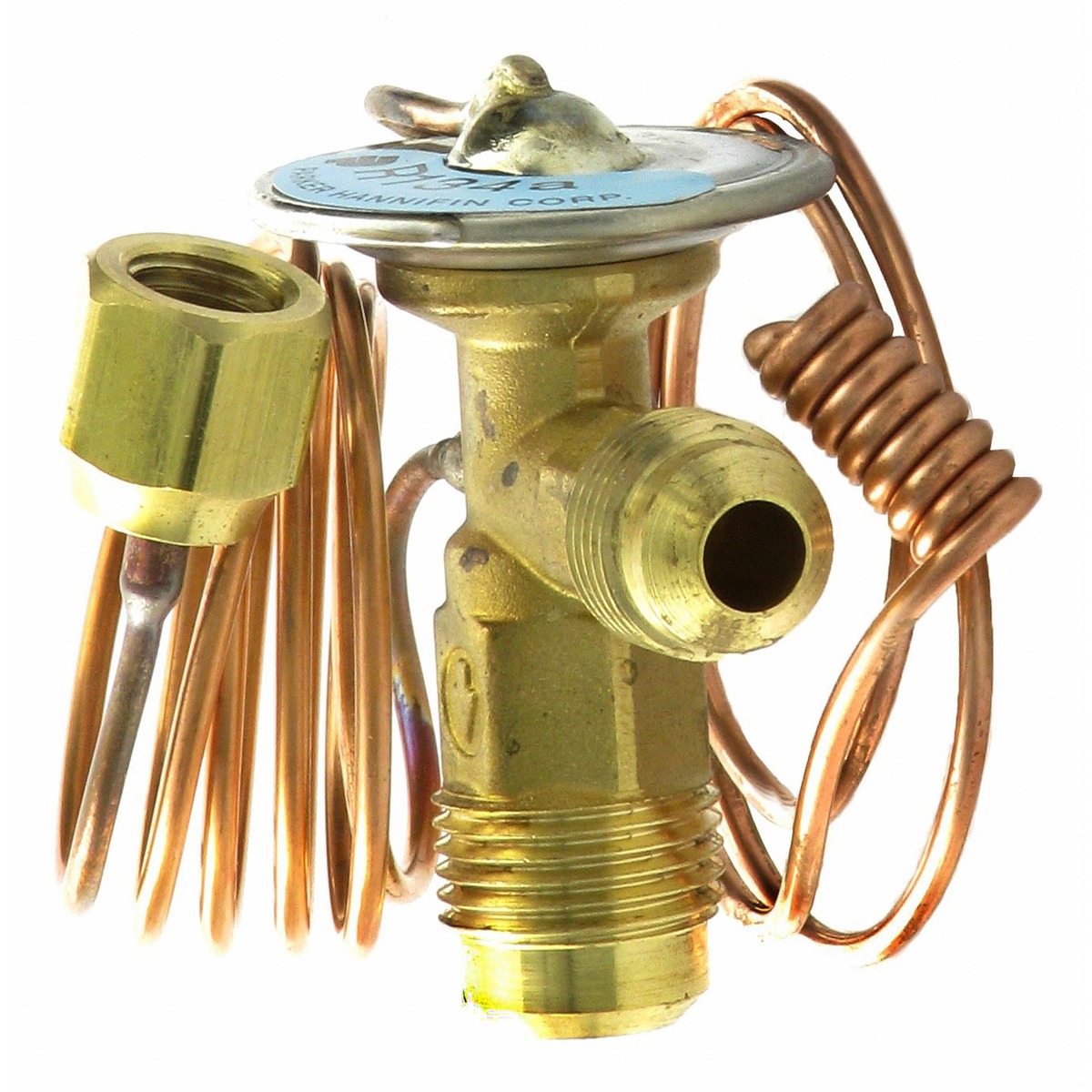Home>Home Maintenance>What Is The Temperature Differential For Air Conditioning
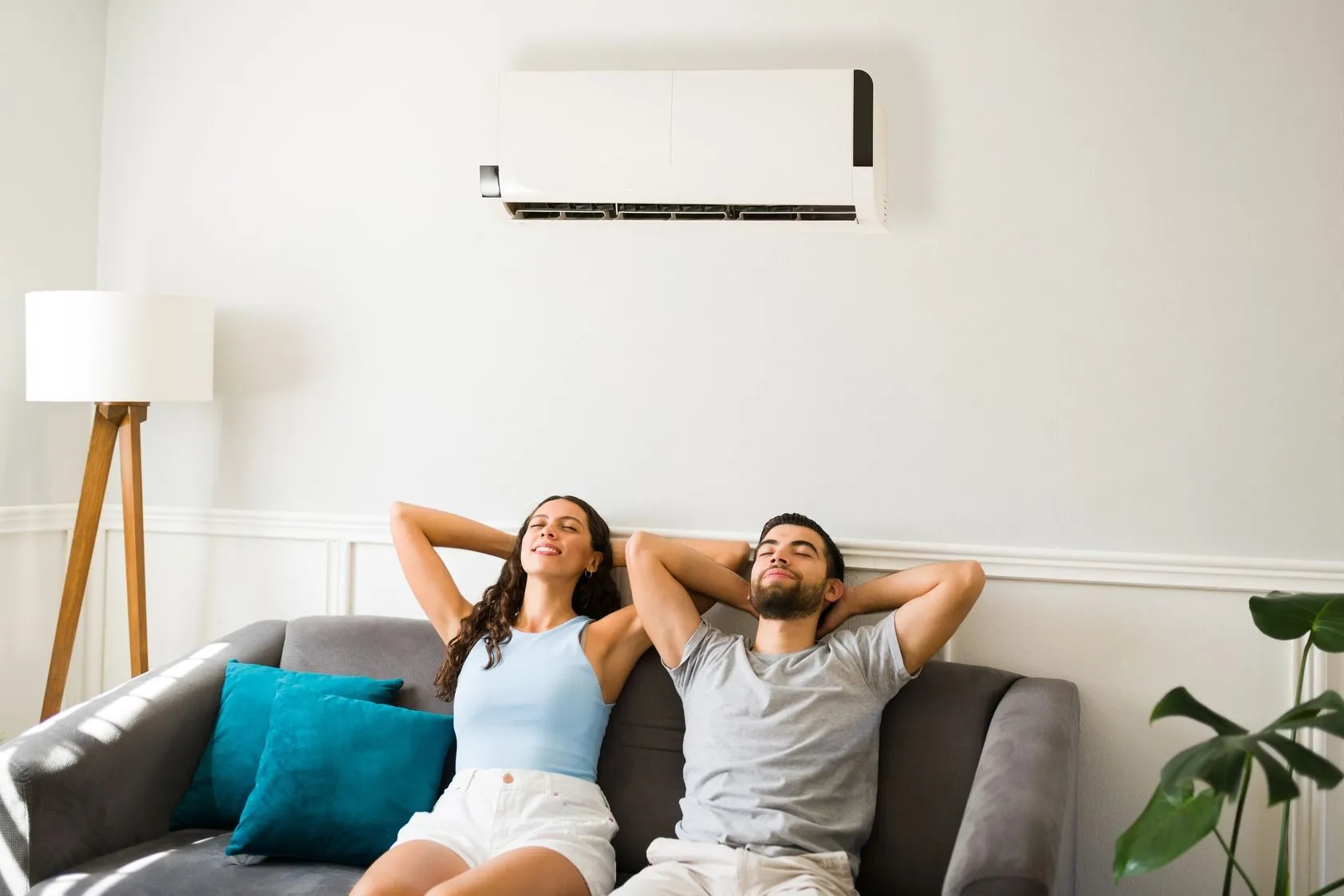

Home Maintenance
What Is The Temperature Differential For Air Conditioning
Modified: March 6, 2024
Learn about the ideal temperature difference for effective air conditioning in your home. Discover essential home maintenance tips for efficient cooling.
(Many of the links in this article redirect to a specific reviewed product. Your purchase of these products through affiliate links helps to generate commission for Storables.com, at no extra cost. Learn more)
Introduction
Welcome to the world of air conditioning, where comfort and climate control come together. Whether you’re trying to beat the summer heat or create a cozy environment during the colder months, understanding the temperature differential is crucial. So, what exactly is the temperature differential in air conditioning?
The temperature differential refers to the difference between the temperature of the air entering and leaving an air conditioning system. It is an essential factor in determining the efficiency and effectiveness of your cooling or heating system. By maintaining the right temperature differential, you can ensure that your home maintains a comfortable temperature while maximizing energy efficiency.
In this article, we will delve deeper into the concept of temperature differential, explore the factors that affect it, discuss its importance, and provide tips on achieving the optimal temperature differential for efficient air conditioning.
So, whether you’re a homeowner looking to better understand your air conditioning system or an HVAC professional seeking to optimize performance, read on to discover all you need to know about the temperature differential in air conditioning.
Key Takeaways:
- Maintaining the right temperature differential in your air conditioning system is crucial for comfort and energy efficiency. Factors like system capacity, airflow, and insulation can impact the temperature difference.
- Regular maintenance, proper insulation, and optimizing airflow are key to achieving the desired temperature differential. Monitoring thermostat settings and seeking professional help when needed can contribute to efficient air conditioning.
Understanding Temperature Differential
Before we dive into the factors affecting the temperature differential in air conditioning, let’s first understand what it entails. In simple terms, the temperature differential refers to the variance in temperature between the air entering and leaving an air conditioning system.
When your air conditioning system is operating correctly, it extracts heat from the indoor air and releases it outside, resulting in cooler air being circulated back into your living spaces. This temperature difference between the incoming and outgoing air is what we refer to as the temperature differential.
The temperature differential is typically measured in degrees Fahrenheit or Celsius. For example, if the air entering the air conditioner is at 75°F and the air leaving the system is at 55°F, the temperature differential would be 20°F.
Understanding the temperature differential is crucial because it directly impacts the effectiveness and efficiency of your air conditioning system. If the temperature differential isn’t within the optimal range, it can indicate potential issues or inefficiencies that need addressing.
Next, let’s explore the factors that influence the temperature differential in air conditioning systems.
Factors Affecting Temperature Differential in Air Conditioning
Several factors can influence the temperature differential in an air conditioning system. By understanding these factors, you can better assess and maintain the efficiency of your cooling or heating system. Let’s take a closer look at them:
- System Capacity: The size and capacity of your air conditioning unit play a significant role in temperature differential. An undersized unit may struggle to cool or heat the air sufficiently, resulting in a lower temperature differential. On the other hand, an oversized unit may cycle on and off frequently, leading to a higher temperature differential.
- Airflow: Proper airflow is essential for maintaining the desired temperature differential. Restrictions in the air ducts, clogged air filters, or issues with the blower motor can impede the airflow, affecting the temperature differential. Regular maintenance and cleaning can help ensure optimal airflow.
- Insulation: The insulation in your home plays a crucial role in maintaining the temperature differential. Insufficient insulation or leaks can allow heat transfer, making it harder for your air conditioning system to achieve the desired temperature differential.
- Outdoor Temperature: The outdoor temperature can impact the temperature differential in your air conditioning system. During hotter days, it may be harder for the system to cool the air, resulting in a smaller temperature differential. Conversely, during colder days, the system may need to work harder to warm the air, leading to a higher temperature differential.
- Thermostat Settings: The temperature settings on your thermostat can also affect the temperature differential. If the thermostat is set too high or too low, it can impact the cooling or heating process, affecting the temperature differential.
- Refrigerant Levels: The refrigerant levels in your air conditioning system need to be at the appropriate level for optimal performance. Low refrigerant levels can impact the system’s ability to cool the air efficiently, resulting in a smaller temperature differential.
These are just a few of the key factors that can influence the temperature differential in your air conditioning system. By considering these factors and addressing any potential issues, you can ensure that your system operates at its best and maintains the desired temperature differential.
Importance of Temperature Differential in Air Conditioning
The temperature differential in air conditioning holds great importance as it directly affects the comfort and efficiency of your cooling or heating system. Let’s explore why the temperature differential matters:
1. Comfort: The temperature differential is crucial for maintaining a comfortable indoor environment. In the summer, a proper temperature differential ensures that the air conditioning system effectively removes heat from the indoor air, providing a cool and comfortable atmosphere. Similarly, in the winter, a suitable temperature differential ensures that the heating system adequately warms the air, creating a cozy ambiance.
2. Energy Efficiency: An optimal temperature differential is vital for energy efficiency. When the temperature differential is within the recommended range, your air conditioning system operates more efficiently, reducing energy consumption and lowering utility bills. On the other hand, if the temperature differential is too high or too low, it can indicate inefficiencies in the system, leading to energy wastage.
3. System Health: Monitoring the temperature differential helps identify any potential issues with your air conditioning system. If the temperature differential deviates significantly from the desired range, it may signal problems such as inadequate refrigerant levels, airflow restrictions, or malfunctioning components. Detecting and addressing these issues promptly can help prevent further damage and improve the lifespan of your system.
4. Cost Savings: Achieving an optimal temperature differential can contribute to long-term cost savings. By ensuring that your air conditioning system operates efficiently, you can reduce energy consumption and prolong the lifespan of the equipment. This translates to lower utility bills and fewer repair or replacement costs.
5. Indoor Air Quality: Maintaining the right temperature differential can also impact indoor air quality. A properly functioning air conditioning system with an appropriate temperature differential helps filter and circulate the air, reducing allergens, pollutants, and humidity levels. This leads to healthier and cleaner air in your home.
Overall, the temperature differential plays a crucial role in maximizing comfort, energy efficiency, system health, cost savings, and indoor air quality. Therefore, it’s essential to understand and monitor the temperature differential to ensure your air conditioning system operates optimally.
Optimal Temperature Differential for Efficient Air Conditioning
Understanding the optimal temperature differential is key to ensuring efficient operation of your air conditioning system. While the ideal temperature differential can vary depending on various factors, there are general guidelines to follow for maximum efficiency. Let’s explore the recommended temperature differentials:
Cooling Mode:
In cooling mode, the recommended temperature differential typically falls in the range of 14 to 20 degrees Fahrenheit (7.8 to 11.1 degrees Celsius). This means that the air leaving the system should be approximately 14 to 20 degrees Fahrenheit cooler than the air entering.
For example, if the incoming air temperature is 80 degrees Fahrenheit (26.7 degrees Celsius), the air leaving the system should be around 60 to 66 degrees Fahrenheit (15.6 to 18.9 degrees Celsius).
Heating Mode:
In heating mode, the optimal temperature differential ranges between 20 and 30 degrees Fahrenheit (11.1 to 16.7 degrees Celsius). This means that the air leaving the system should be approximately 20 to 30 degrees Fahrenheit warmer than the air entering.
For instance, if the incoming air temperature is 60 degrees Fahrenheit (15.6 degrees Celsius), the air leaving the system should be around 80 to 90 degrees Fahrenheit (26.7 to 32.2 degrees Celsius).
It’s important to maintain these temperature differentials within the recommended ranges for several reasons:
Energy Efficiency:
By adhering to the optimal temperature differential, you can maximize energy efficiency, as the system operates within its designed specifications. This reduces energy consumption, resulting in lower utility bills and a smaller carbon footprint.
Comfort:
Maintaining the recommended temperature differential ensures a comfortable indoor environment. If the differential is too low, the system may struggle to reach the desired temperature, leading to discomfort. Conversely, if the differential is too high, it can create temperature imbalances and cold/hot spots.
System Longevity:
Operating within the optimal temperature differentials can extend the lifespan of your air conditioning system. When the system operates efficiently, it experiences less strain, reducing the likelihood of mechanical failures and the need for costly repairs or replacements.
Remember, these temperature differentials are general guidelines, and some variations may apply depending on factors such as climate, insulation, and specific system requirements. It’s always recommended to consult the manufacturer’s guidelines or seek the advice of a professional HVAC technician to determine the optimal temperature differential for your specific system.
The temperature differential for air conditioning is typically around 15-20 degrees Fahrenheit. This means the air coming out of the vents will be 15-20 degrees cooler than the air being pulled into the system.
Ways to Achieve the Desired Temperature Differential
To achieve the desired temperature differential in your air conditioning system, there are several steps you can take. By following these guidelines, you can optimize the efficiency and performance of your cooling or heating system. Let’s explore some ways to achieve the desired temperature differential:
1. Regular Maintenance:
Regular maintenance is essential for ensuring optimal performance and achieving the desired temperature differential. Schedule professional maintenance at least once a year to clean or replace air filters, test refrigerant levels, check for leaks, and inspect system components. Regular maintenance can help identify and address any issues that may affect the temperature differential.
2. Ensure Proper Insulation:
Proper insulation is crucial for maintaining the desired temperature differential. Insulate your home properly to minimize heat transfer through walls, floors, and ceilings. This ensures that the cooled or heated air stays inside, allowing your air conditioning system to achieve and maintain the desired temperature differential more effectively.
3. Optimize Airflow:
Proper airflow is essential for achieving the desired temperature differential. Ensure that air vents and registers are not obstructed by furniture or other objects. Keep the air filters clean and replace them regularly to prevent clogs that can restrict airflow. Additionally, have your air ducts inspected for any leaks or blockages that may hinder proper airflow.
4. Set the Thermostat Correctly:
Properly setting your thermostat can assist in achieving the desired temperature differential. During the cooling season, set the thermostat to a temperature that keeps you comfortable while still allowing the air conditioning system to reach the desired temperature differential. Similarly, in the heating season, adjust the thermostat to a temperature that provides adequate warmth while maintaining the desired temperature differential.
5. Avoid Overworking the System:
Avoid overworking your air conditioning system, as it can negatively impact the temperature differential. Prevent excessive heat gain during hot periods by minimizing the use of heat-generating appliances, closing blinds or curtains during the day, and utilizing fans to improve air circulation. Similarly, during the heating season, dress warmly and use blankets to reduce reliance on the heating system.
6. Seek Professional Help:
If you’re having trouble achieving the desired temperature differential or suspect any issues with your air conditioning system, it’s advisable to consult a professional HVAC technician. They can inspect, diagnose, and resolve any underlying problems that may be affecting the temperature differential.
By implementing these strategies, you can increase the likelihood of achieving the desired temperature differential, leading to improved comfort, energy efficiency, and system performance.
Common Problems with Temperature Differential in Air Conditioning
While maintaining the desired temperature differential in your air conditioning system is crucial, certain common problems can hinder its achievement. Identifying these issues and addressing them promptly can help restore the optimal performance of your cooling or heating system. Let’s explore some common problems that can affect the temperature differential:
1. Insufficient Refrigerant:
Low refrigerant levels can prevent the air conditioning system from effectively cooling the air, resulting in a reduced temperature differential. Common causes of low refrigerant levels include leaks in the system or improper installation. Recharging the refrigerant and fixing any leaks can help restore the desired temperature differential.
2. Dirty Air Filters:
Dirty or clogged air filters can restrict airflow, negatively impacting the temperature differential. When air filters are dirty, the system must work harder to push air through, leading to reduced efficiency and temperature differential. Regularly cleaning or replacing air filters can help maintain proper airflow and promote the desired temperature differential.
3. Obstructed Ductwork:
Blocked or obstructed air ducts can hinder proper airflow, resulting in an inadequate temperature differential. Objects, debris, or even collapsed sections of ductwork can restrict the flow of air, causing imbalances and reduced system performance. Having your ductwork inspected and cleaned, if necessary, can help ensure sufficient airflow and restore the temperature differential.
4. Faulty Thermostat:
A malfunctioning thermostat can lead to incorrect temperature readings and improper system operation, affecting the temperature differential. If the thermostat is not functioning correctly, the system may not cycle on or off at appropriate times, resulting in inadequate cooling or heating. Calibrating or replacing the thermostat can resolve this issue.
5. Blockage in the Condenser Unit:
The condenser unit, located outside, can become obstructed by dirt, leaves, or debris, hindering heat exchange and reducing the temperature differential. Regularly inspecting and cleaning the condenser unit can improve airflow and restore the desired temperature differential.
6. Aging Equipment:
Over time, air conditioning systems can experience wear and tear, leading to reduced efficiency and performance. Aging components, such as worn-out compressors or motors, may struggle to achieve the proper temperature differential. In such cases, it may be necessary to replace older equipment to restore optimal performance.
If you encounter any of these common problems or are experiencing difficulties with the temperature differential in your air conditioning system, it’s advisable to consult a professional HVAC technician. They can diagnose the issue, provide necessary repairs or replacements, and help restore the desired temperature differential for efficient operation.
Troubleshooting Temperature Differential Issues in Air Conditioning
When experiencing temperature differential issues in your air conditioning system, it’s important to troubleshoot and identify the underlying causes. By following a systematic approach, you can address the problem effectively and restore the desired temperature differential. Here are some troubleshooting steps to consider:
1. Check Air Filters:
Start by inspecting and cleaning or replacing the air filters. Dirty or clogged filters can restrict airflow, leading to reduced temperature differential. Clean filters allow for proper air circulation and improved performance.
2. Examine the Thermostat:
Ensure that the thermostat is set to the correct temperature and mode. Check the batteries if applicable and ensure the thermostat is properly calibrated. If needed, recalibrate or replace the thermostat to ensure accurate temperature readings and proper system operation.
3. Inspect Air Vents and Registers:
Check all air vents and registers throughout your home. Make sure they are not blocked or obstructed by furniture, curtains, or other objects. Blocked vents can impede airflow and affect the temperature differential. Ensure all vents are open and free from obstacles.
4. Clean the Condenser Unit:
Inspect the outdoor condenser unit for any dirt, debris, or blockages. Clean the unit by removing debris, such as leaves or grass, and ensure that the surrounding area is clear. Obstructions can limit airflow and hinder heat exchange, affecting the temperature differential.
5. Check for Ductwork Leaks:
Inspect the ductwork for any leaks or cracks. Leaking ducts can result in air loss, reducing the temperature differential. Seal any gaps or holes using duct tape or mastic sealant. If the damage is significant, consider contacting a professional to repair or replace the ductwork.
6. Monitor Refrigerant Levels:
If your air conditioning system is not cooling or heating properly, low refrigerant levels may be the culprit. Consult a professional HVAC technician to check and recharge the refrigerant levels if necessary. A proper refrigerant charge helps ensure efficient cooling or heating and maintains the desired temperature differential.
7. Schedule Professional Maintenance:
If troubleshooting on your own does not resolve the temperature differential issues, it’s best to schedule professional maintenance. A trained HVAC technician can thoroughly inspect your system, identify any underlying problems, and perform necessary repairs or adjustments to restore the temperature differential.
Remember, troubleshooting and resolving temperature differential issues may require technical knowledge and expertise. If you are unsure or uncomfortable performing any of these troubleshooting steps, it’s recommended to seek professional assistance to avoid further complications or damage to your air conditioning system.
By following these troubleshooting steps and seeking professional help when needed, you can effectively identify and address temperature differential issues, ensuring optimal performance and efficiency of your air conditioning system.
Conclusion
Understanding and maintaining the temperature differential in your air conditioning system is essential for ensuring comfort, energy efficiency, and optimal performance. By recognizing the factors that influence the temperature differential, you can make informed decisions to achieve the desired range.
Regular maintenance, such as cleaning or replacing air filters, optimizing airflow, and proper insulation, is crucial for maintaining the desired temperature differential. Monitoring and adjusting thermostat settings, avoiding overworking the system, and seeking professional help when needed can further contribute to achieving the optimal temperature differential.
Addressing common problems that can affect the temperature differential, such as low refrigerant levels, dirty air filters, obstructions in the ductwork, and faulty thermostats, is vital for restoring the desired performance of your air conditioning system.
Ultimately, maintaining the optimal temperature differential not only enhances your comfort but also improves energy efficiency, prolongs the lifespan of your equipment, and reduces utility costs. It allows your air conditioning system to effectively cool or heat your home, providing a pleasant environment all year round.
If you encounter any difficulties in achieving and maintaining the desired temperature differential, it is advisable to consult a professional HVAC technician. They possess the expertise and knowledge to troubleshoot and resolve any issues, ensuring optimal performance and comfort in your home.
By staying proactive in monitoring and maintaining the temperature differential, you can enjoy the benefits of an efficient and reliable air conditioning system that keeps you cool in the summer and warm in the winter.
Frequently Asked Questions about What Is The Temperature Differential For Air Conditioning
Was this page helpful?
At Storables.com, we guarantee accurate and reliable information. Our content, validated by Expert Board Contributors, is crafted following stringent Editorial Policies. We're committed to providing you with well-researched, expert-backed insights for all your informational needs.
